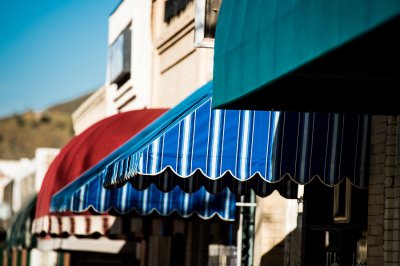You may be accustomed to seeing storefront awnings and business canopies, but are you familiar with how these installations came about? If you’re thinking about enhancing your building’s appearance with awnings in New York City , then continue reading to learn about the evolution of these shades and their use over the years. 
Early History
Installing awnings on your building can offer energy savings, style, and historic appeal. Awnings can protect interior furnishings from sun damage, regulate indoor temperatures by preventing heat gain, and add curb appeal to building exteriors. The act of shading areas in this way offers romantic appeal and is no recent invention. The use of awnings and canopies date at least as far back as when ancient Syrians and Egyptians hung woven textiles over homes and shop stalls to help shade them from the intense sun.
American History
In time, these shades gained ornamental value. This became very apparent in the 1890s when Americans began installing striped canvas awnings on their Victorian homes to embellish their appearance. Awnings enjoyed growing popularity as people continued to enhance home and building exteriors with canvas coverings in a broad range of colors, patterns, and styles. Retractable awnings were developed for shopkeepers, allowing them to collapse their storefront canopies prior to stormy weather. This trend later spread to residential awnings. In the 1940s, aluminum shades replaced canvas ones. However, the use of awnings faded altogether in the 1950s as air conditioning installation became widespread.
Current Day
Today, awnings are enjoying renewed popularity as home and business owners look for ways to reduce their environmental impact and spend less money on cooling costs. People stopped installing awnings with the invention of air conditioning, but awnings still play an important role in preventing sunlight from streaming through windows. By blocking sun in this way, awnings can reduce the amount of energy needed to cool your building. Finally, adding style and color to your building’s exterior with awning installation can enhance the look of your commercial property.

